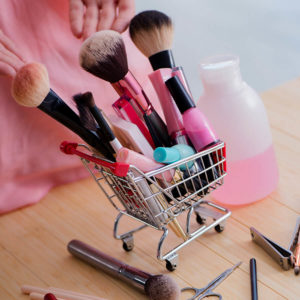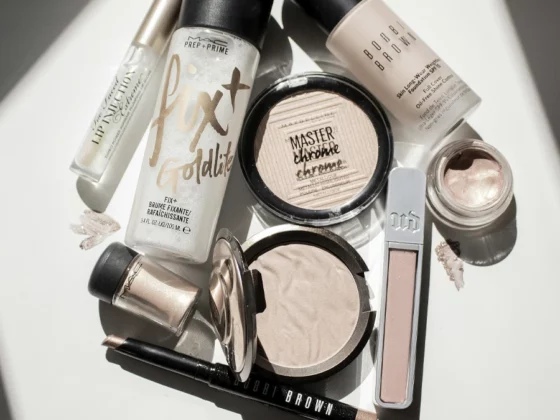Do you have an innovative new cosmetic product? Are you convinced that there is a demand for it on the market? Are you wondering what the best strategy would be for selling it directly online? Before deciding whether to go to a marketing agency, or doing your own marketing plan, let’s take a look at the main points of what makes a good strategy for selling cosmetic products online.
Indice
To sell your cosmetics product, judge it objectively
A Neapolitan proverb made famous by a song from Pino Daniele, says that “Every cockroach is beautiful to its mother”, or “Even cockroaches are beautiful, to their mother!”. So, let’s get ourselves out of the role of mother cockroach and start acting more like a product manager, an expert in the management and sale of cosmetic products. At this early stage, think about your product as objectively as possible. Imagine being on one of the bigger cosmetics sites. Would its packaging catch your eye? Do you find the name both pleasant and indicative of the benefits of the product? Imagine getting it at home after seeing just one picture it beforehand. Would it live up to expectations? And have you tried it yourself? Without thinking too much, take note of the pros and cons that strike you in this first analysis, and begin to reflect on the real advantages of your product.

What to do when launching cosmetics products
The world of cosmetics is a real jungle, and one of the most serious threats you will face is market saturation. Do meticulous research on Google regarding competing products, without focusing solely on the most similar ones. If you’re looking to sell an aloe vera hand cream, for example, look for the same product made by different brands, and then do research on hand creams with vegetable ingredients, then on hand creams with natural ingredients, and finally on hand creams in general. Broadening the definition will also increase the number of products you’ll be able to look at. To reduce time spent on research, and make the job easier, you can narrow things down to prices. If you sell the cream for between 5 and 10 euros, your comparison will have to be made against products in that price range, not with luxury creams such as La Mer hand cream, in a 100ml tube for sale at 90 euros. But…how do you know the right price to charge for your cosmetics?
Deciding on the right price for your cosmetics
Let’s start with the basics. The selling price must of course be higher than the total cost incurred to produce it, so that you make a profit. The balance sheet is the basis of every sales strategy and to avoid any unpleasant surprises you must calculate expenses down to the last cent – not only for production, but also for transport, advertising, research and any other activities related to your product. Once this is done and you’ve established a realistic profit margin, compare your product with those in a similar price range. If you’re in the 5–10 euro range, the secret is to present yourself as a product of the range immediately above you. In other words, a comparison between the value of the product and the price must be clear. Value for money is what consumers are all looking for.
Contact us for more information about our services

What does my product need to communicate about itself?
Sales theory is the same in every domain, even for cosmetics products. A product must satisfy a desire or a need. If you think about it, the whole world of cosmetics revolves around these two things, although they often overlap. For example, a cleansing milk is a product that satisfies the need for daily face washing, but which can also be a product for those who want brighter skin in 15 days.
How to market cosmetics products that meet a need
Products that meet needs are functional. Such products are rarely in the spotlight, but are essential to the consumer’s beauty outcomes. Some examples might be products for hair removal, for cleaning and hygiene, and for minimizing blemishes such as pimples or cellulite. For this, it’s essential to ensure the product makes its particular benefits clear, possibly accompanied by some numerical data. When communicating such information, use the problem/solution mechanism, putting yourself in the consumer’s shoes and showing them how to solve the problem with your product. Some examples: “Bored of removing your makeup every night? Buy our 2-minute cleansing milk.” “Tight skin after showering? Try our instant-absorb moisturizer.” “Deodorant stains on your clothes? You’ll enjoy this no-stains deodorant”.
How to market cosmetic products that fulfill a desire
Some products are more of a luxury than a necessity. A palette of bright eyeshadows, a perfume that leaves a wonderful trail, and fawn eyelash mascara are perfect examples of products that satisfy a desire. Keep in mind that in the realm of cosmetics, ‘needs’ and a ‘desires’ are overlapping concepts, and a product must contain components of both.
To use an anti-cellulite cream as an example: “Used every day for a month, reduces thigh circumference by 2 cm. Wear the sexiest swimsuit on the beach this year!”
Another example with a glitter eyeshadow: “Make your eyes bright and your makeup shine all night thanks to our long lasting 24-hour formula.
The packaging and other images help to give personality to your product and are essential for non- ‘problem-solving’ products such as perfume.
Social networks for selling cosmetic products
Are you wondering which social channels to use for marketing your cosmetic products? When it comes to raw numbers, Facebook remains on top, having an insane number of almost 3 billion users, according to Sole24Ore. When it comes to cosmetics, and all other products related to image, the social media par excellence is Instagram, which, according to recent statistics, has about 2 billion active monthly users, or 500 million daily! Let’s see how to make best use of Facebook and Instagram for selling your cosmetics products.
Marketing cosmetics products on Facebook: your brand
The most popular social network in the world is a good place to start when you want to put your brand out there and make it more well-known. On Facebook, image is of course important, but there’s still plenty of room for words. Set up your company page and describe your products in detail, always considering the perspective of the consumer. Use light and easy language, and always finish with a call to action. Put a question at the end of posts to promote engagement, and if users react, don’t wait too long to respond, and keep your tone warm.
Contact us for more information about our services
Marketing cosmetics products on Instagram: your image
Instagram is the platform where image is king. You have to catch the attention of people flying through their feed, so choose carefully what image you use for each post and take advantage of Instagram stories for showing off various aspects of your cosmetics – who buys them, how they are used, what results they offer. Make it pleasant and beautiful to look at. Instagram helps to create the engagement that gets people to buy. Good hooks are images with an element of surprise, like this.

Marketing cosmetics products on TikTok: discovery
TikTok has grown by 45% in just one year, and now has one billion users all over the world. This growth comes as a shock to the big cosmetics companies, who don’t yet have a presence on the platform. Because of their relative absence, now may be the right time to get on the platform with your cosmetic products. With the way TikTok works, informal marketing works best, where you speak as if you were just telling a friend about your product. The name of the game is entertainment and fun.

Successful online cosmetics sales: content
Whichever social media platform you go with, content is key to capturing the attention of potential customers. So, let’s close with 3 ideas you could use for the content you put on your social media channels:
- tutorial on using your products – ideal for innovative products that people won’t know how to use, such as this
- backstage looks on how your products are made – perfect for products that have a special ingredient (perhaps something naturally sourced), like this
- unboxing videos – great for products that have nice packaging or that have a surprising detail, like this for example.





